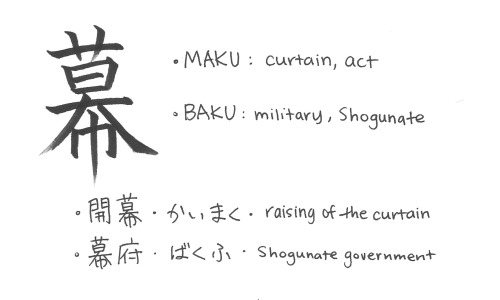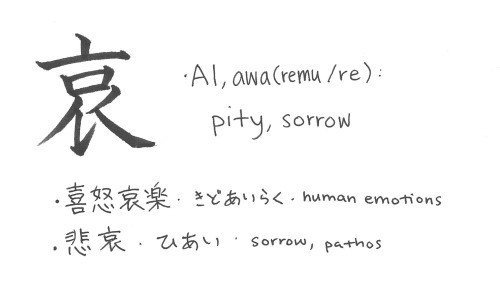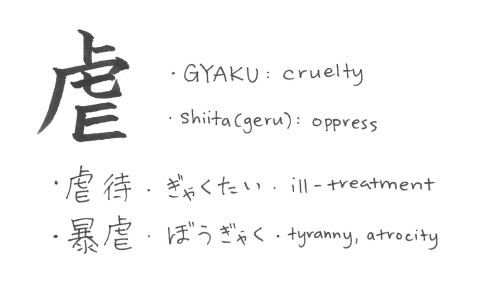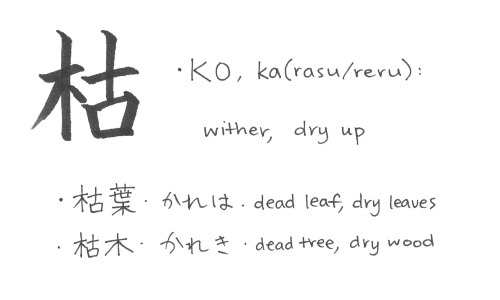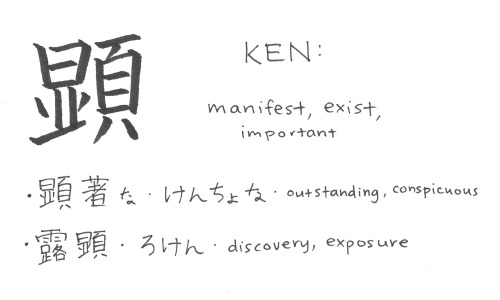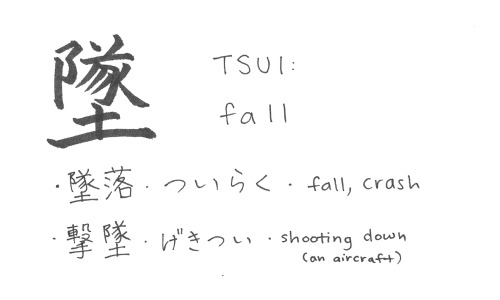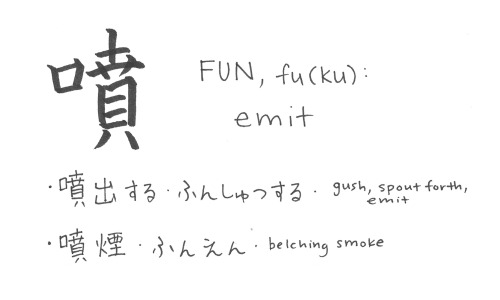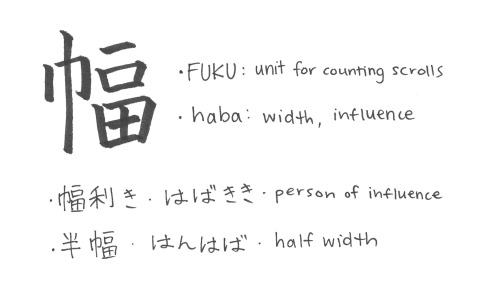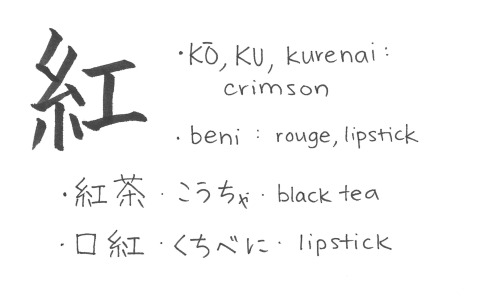#japanese study
Learn Japanese with Anime - What Do I Have To Fear?
Learn Japanese with Anime - Words Are Like Knives
Learn Japanese with Anime - How Does It Feel To Be Looked Down Upon By A…
Learn Japanese with Anime - We Have No Attachments In A World Where Shinnosuke Doesn’t Exist!
Learn Japanese With Anime I, Giorno Giovanna, Have A Dream
JLPT N5 Grammar - てください
Are you using it right??
How do you ask someone to do something without sounding like a teacher? Hint: not like this!
————-
Welcome to Benkyogo!
In our ぶんぽうご Real Japanese Grammar series, Nani and Mani are deep diving into the textbook grammar required for the JLPT, throwing out the stuff you’ll never use, and teaching you how to speak authentically whilst expressing your own personality.
⭕️ You WILL:
- Understand grammar in real life context- Be told when and where to forget the BS - Get to listen to 2 random people free-talking about Japanese grammar
❌ You WON’T:
- Sound boring when talking to your Japanese friends - Say anything rude to your Japanese boss - Speak like you’re fresh outta your favourite anime
We don’t claim to be experts, we’re just 2 Japanese speakers (one native, one second language) chatting about the DO’s and DON’T’s of Japanese grammar in the 21st century. Keep up, textbooks!!
————-
Check out https://benkyogo.co.uk/ for detailed hints, tips and resources to self-study Japanese.
⛩Check out our store at https://www.etsy.com/shop/benkyogo
JLPT N1 Grammar - かたがた
Are you using it right??
でも seems like a great way to say “but” BUT… there’s a big but. There are politer (and more native-sounding) ways to say BUT. Learn about all the buts on this episode of Bunpogo!
————-
Welcome to Benkyogo!
In our ぶんぽうご Real Japanese Grammar series, Nani and Mani are deep diving into the textbook grammar required for the JLPT, throwing out the stuff you’ll never use, and teaching you how to speak authentically whilst expressing your own personality.
⭕️ You WILL:
- Understand grammar in real life context- Be told when and where to forget the BS - Get to listen to 2 random people free-talking about Japanese grammar
❌ You WON’T:
- Sound boring when talking to your Japanese friends - Say anything rude to your Japanese boss - Speak like you’re fresh outta your favourite anime
We don’t claim to be experts, we’re just 2 Japanese speakers (one native, one second language) chatting about the DO’s and DON’T’s of Japanese grammar in the 21st century. Keep up, textbooks!!
————-
Check out https://benkyogo.co.uk/ for detailed hints, tips and resources to self-study Japanese.
⛩Check out our store at https://www.etsy.com/shop/benkyogo
JLPT N2 Grammar - いわゆる
Are you using it right??
This one’s hard to say but once you get the knack it’s a surefire way to demonstrate your Japanese is higher level.
————-
Welcome to Benkyogo!
In our ぶんぽうご Real Japanese Grammar series, Nani and Mani are deep diving into the textbook grammar required for the JLPT, throwing out the stuff you’ll never use, and teaching you how to speak authentically whilst expressing your own personality.
⭕️ You WILL:
- Understand grammar in real life context- Be told when and where to forget the BS - Get to listen to 2 random people free-talking about Japanese grammar
❌ You WON’T:
- Sound boring when talking to your Japanese friends - Say anything rude to your Japanese boss - Speak like you’re fresh outta your favourite anime
We don’t claim to be experts, we’re just 2 Japanese speakers (one native, one second language) chatting about the DO’s and DON’T’s of Japanese grammar in the 21st century. Keep up, textbooks!!
————-
Check out https://benkyogo.co.uk/for detailed hints, tips and resources to self-study Japanese.
⛩Check out our store at https://www.etsy.com/shop/benkyogo
JLPT N3 Grammar - きる
Are you using it right??
でも seems like a great way to say “but” BUT… there’s a big but. There are politer (and more native-sounding) ways to say BUT. Learn about all the buts on this episode of Bunpogo!
————-
Welcome to Benkyogo!
In our ぶんぽうご Real Japanese Grammar series, Nani and Mani are deep diving into the textbook grammar required for the JLPT, throwing out the stuff you’ll never use, and teaching you how to speak authentically whilst expressing your own personality.
⭕️ You WILL:
- Understand grammar in real life context- Be told when and where to forget the BS - Get to listen to 2 random people free-talking about Japanese grammar
❌ You WON’T:
- Sound boring when talking to your Japanese friends - Say anything rude to your Japanese boss - Speak like you’re fresh outta your favourite anime
We don’t claim to be experts, we’re just 2 Japanese speakers (one native, one second language) chatting about the DO’s and DON’T’s of Japanese grammar in the 21st century. Keep up, textbooks!!
————-
Check out https://benkyogo.co.uk/ for detailed hints, tips and resources to self-study Japanese.
⛩Check out our store at https://www.etsy.com/shop/benkyogo
JLPT N4 Grammar - じゃないか
Are you using it right??
でも seems like a great way to say “but” BUT… there’s a big but. There are politer (and more native-sounding) ways to say BUT. Learn about all the buts on this episode of Bunpogo!
————-
Welcome to Benkyogo!
In our ぶんぽうご Real Japanese Grammar series, Nani and Mani are deep diving into the textbook grammar required for the JLPT, throwing out the stuff you’ll never use, and teaching you how to speak authentically whilst expressing your own personality.
⭕️ You WILL:
- Understand grammar in real life context- Be told when and where to forget the BS - Get to listen to 2 random people free-talking about Japanese grammar
❌ You WON’T:
- Sound boring when talking to your Japanese friends - Say anything rude to your Japanese boss - Speak like you’re fresh outta your favourite anime
We don’t claim to be experts, we’re just 2 Japanese speakers (one native, one second language) chatting about the DO’s and DON’T’s of Japanese grammar in the 21st century. Keep up, textbooks!!
————-
Check out https://benkyogo.co.uk/ for detailed hints, tips and resources to self-study Japanese.
⛩Check out our store at https://www.etsy.com/shop/benkyogo
JLPT N3 Grammar - というより
Are you using it right??
Find out how to slightly and politely disagree with what someone has said about an opinion or situation in this episode of Bunpogo. We also cover the casual form,ていうか.
————-
Welcome to Benkyogo!
In our ぶんぽうご Real Japanese Grammar series, Nani and Mani are deep diving into the textbook grammar required for the JLPT, throwing out the stuff you’ll never use, and teaching you how to speak authentically whilst expressing your own personality.
⭕️ You WILL:
- Understand grammar in real life context- Be told when and where to forget the BS - Get to listen to 2 random people free-talking about Japanese grammar
❌ You WON’T:
- Sound boring when talking to your Japanese friends - Say anything rude to your Japanese boss - Speak like you’re fresh outta your favourite anime
We don’t claim to be experts, we’re just 2 Japanese speakers (one native, one second language) chatting about the DO’s and DON’T’s of Japanese grammar in the 21st century. Keep up, textbooks!!
————-
Check out https://benkyogo.co.uk/for detailed hints, tips and resources to self-study Japanese.
⛩Check out our store at https://www.etsy.com/shop/benkyogo
JLPT N1 Grammar - までだ
Are you using it right??
I was just kidding!! Or was I? Find out about the difference between までだ and だけだ in our 20th Episode of Bunpogo!
————-
Welcome to Benkyogo!
In our ぶんぽうご Real Japanese Grammar series, Nani and Mani are deep diving into the textbook grammar required for the JLPT, throwing out the stuff you’ll never use, and teaching you how to speak authentically whilst expressing your own personality.
⭕️ You WILL:
- Understand grammar in real life context- Be told when and where to forget the BS - Get to listen to 2 random people free-talking about Japanese grammar
❌ You WON’T:
- Sound boring when talking to your Japanese friends - Say anything rude to your Japanese boss - Speak like you’re fresh outta your favourite anime
We don’t claim to be experts, we’re just 2 Japanese speakers (one native, one second language) chatting about the DO’s and DON’T’s of Japanese grammar in the 21st century. Keep up, textbooks!!
————-
Check out https://benkyogo.co.uk/for detailed hints, tips and resources to self-study Japanese.
⛩Check out our store at https://www.etsy.com/shop/benkyogo
Day 5 - Hayfever sucks.
釈
音読み:シャク, セキ
訓読み:とく, す・てる, ゆる・す
意味:Explanation
言葉:解釈 - かいしゃく - Explanation, interpretation
会釈 - えしゃく - Slight bow, nod, salutation
希釈 - きしゃく - Dilution
釈放 - しゃくほう - Release, liberation, acquittal
注釈 - ちゅうしゃく - Notes, comment, remark, annotation斬
音読み:ザン, サン, セン, ゼン
訓読み:き・る
意味:Beheading, kill, murder
言葉:斬る - きる - To kill (a human) using a blade
斬新 - ざんしん - Novel, original, newness
斬れ味 - きれあじ - Sharpness, cutting ability (more often 切れ味)
斬首刑 - ざんしゅけい - Decapitation
斬り払う - きりはらう - To clear away, clear land, prune, lop off (more often 切り払う)宜
音読み:ギ
訓読み:よろ・しい, よろ・しく
意味:Best regards, good
言葉:宜しい - よろしい - Good, okay, all right (honorific)
時宜 - じぎ - Right time, appropriate time
適宜 - てきぎ - Suitable, appropriate
便宜 - べんぎ - Convenience, accommodation, advantage, benefit
宜しくお願いします - よろしくおねがいします - I look forward to working with you (plus a lot of other ways this can be used)
1250/2000
JLPT: N1
School Grade: 6th
This character is a combination of 莫 a non-general use character meaning “must not/do not/be not” and 巾 cloth. 莫 itself depicts the sun sinking among the plants, and carries a meaning of “conceal.” Here 莫 is a phonetic element signaling the on’yomi, but it is also working to lend its own meaning. Together with 巾 this gives “cloth which conceals,” or a “curtain.” The other meanings have all developed through association.
Post link
1249/2000
JLPT: N1
School Grade: Junior high school
This character is a combination of 衣 clothing and 口 mouth. There are multiple theories for the origin of this character. One is that it represents covering the mouth with a cloth, or, in a figurative sense, “covering/stifling one’s (sad) feelings/thoughts and keeping them inside one’s heart.”
Post link
1248/2000
JLPT: N1
School Grade: Junior high school
Older forms of this character show that it was a combination of 虍 tiger, claw (backwards ヨ), and 几 (人) person. 虐 depicted a tiger catching/clawing a person, and came to represent “cruelty/brutality.” “Oppress” is an associated meaning.
Post link
1247/2000
JLPT: N1
School Grade: Junior high school
This character is a combination of 而 and yet/but/however and 寸 measure/hand. 而 itself developed from the image of a beard, and here is being used to express that meaning. 寸 here means “careful use of the hand.” 耐 is a pictograph that referred to “shaving off a beard,” which was a minor punishment (the next level up was shaving the hair). This in turn symbolized something that was “not too bad” and “bearable.”
Post link
1246/2000
JLPT: N2
School Grade: Junior high school
This character is a combination of 木 tree and 古 old. Here 古 is a phonetic element signaling the on’yomi. Some say that 古 developed from the image of a skull, giving it a meaning of something hard and old. It is likely lending that connotation here, giving 枯 a meaning of an old, hard, dried up tree. This then symbolizes “decaying” and “withering” in a more general sense.
Post link
1245/2000
JLPT: N1
School Grade: Junior high school
This character was formerly written 顯, a combination of 㬎 a Chinese-only character meaning “motes (small particles of dust)” and 頁 head. 㬎 itself is a combination of 日 sun and 絲 threads. One source says that 㬎 represents laying silk threads out in the sun. With the addition of 頁, this gives 㬎 a meaning of putting ones face out into a bright place/the light of day, letting it be clearly seen. This led to the meaning of “visible” in general, and also “manifest.”
Post link
1244/2000
JLPT: N1
School Grade: Junior high school
This character was formerly written 緣, a combination of 糸 thread and 彖 a Chinese-only character meaning “pig/hedgehog.” Here 彖 is a phonetic element signaling the on’yomi, while also lending a meaning of “dangling edge” (from the image of a pig with a rounded, hanging stomach). Together with 糸 this gives “threads used for edging/hemming” or “threads used for decorating/embroidering the edges of clothes/cloth.” Over time 縁 came to mean “edge” in general. The meanings of “relations” and “ties” are thought by some scholars to be the result of borrowings.
Post link
1243/2000
JLPT: N1
School Grade: Junior high school
This character is a combination of 糸 thread, here meaning “cord,” and 帝 emperor, acting as a phonetic element signaling the on’yomi. 帝 itself developed from a pictogram of three vertical lines tied together (there are different interpretations of what exactly it represents), and carries a meaning of “to bind firmly.” Together with 糸, this gives “to bind firmly with a cord.” It has since come to also mean “tighten/shut,” and is even used in a figurative sense as “conclude/tie up.”
Post link
1242/2000
JLPT: N1
School Grade: Junior high school
This character is a combination of 日 sun/day and 斬 behead/kill. Here 斬 is a phonetic element signaling the on’yomi, while also lending a meaning of “brief.” 日 is being used to mean “time.” Together, they give “brief time.”
Post link
1241/2000
JLPT: N1
School Grade: Junior high school
This character is a combination of 扌 hand and 最 most. Here, 最 is being used in its original, literal sense of “take by force.” Together with 扌 this gives “take (by force) with the hand,” or “pluck/snatch.” It has also come to be used for “taking photographs,” likely due to the idea of a quick action.
Post link
1240/2000
JLPT: N1
School Grade: Junior high school
This character is a combination of 隊 corps/unit and 土 earth/ground. Here, 隊 is being used in its original sense of “fall down a hill,” with 土 reinforcing the meaning. It has since come to mean “fall” in a broader sense.
Post link
1239/2000
JLPT: N1
School Grade: Junior high school
This character is a combination of 口 mouth and 賁 a non-general use character meaning “decorate.” The origins of this character are somewhat obscure due to the obscure nature of 賁. One source says that 賁 also carries a meaning of “to boil up/to break out/to get excited.” With 口, this gives 噴 a meaning of “to burst forth from the mouth.” By extension this came to mean “vent/emit” in a broader sense, including “spout” and “gush.”
Post link
1238/2000
JLPT: N1
School Grade: Junior high school
This character is a combination of ⺊ a variant of divination (crack) and 鼎 round kettle (here simplified as 貝). Here 鼎/貝 is a phonetic element signaling the on’yomi, but also being used to express “request/seek.” Originally 貞 meant to “seek to learn the will of the gods by divination.” Its current meanings of “chastity” and “virtue” are thought by some to be a borrowed meaning. Others believe it to be an extended meaning, as in “acting in a manner approved of by the gods.”
Post link
1236/2000
JLPT: N2
School Grade: 6th grade
This character is a combination of 扌 hand and 罙 an element that initially was a combination of 穴 hole, 又 hand, and 火 fire. 罙 referred to the idea of a hand reaching into a hole, and also carries a connotation of “deep.” With 扌, this gives 探 a meaning of “groping about” for something, leading to the meanings of “search” and “probe.”
Post link
1235/2000
JLPT: N1
School Grade: Junior high school
This character is a combination of 糸 thread and 逢 a non-general use character meaning “meet.” Here 逢 is a phonetic element signaling the on’yomi, while also lending its own meaning to express “join.” With 糸 this gives 縫 a meaning of “join with thread,” or “sew.”
Post link
1234/2000
JLPT: N2
School Grade: Junior high school
This character is a combination of 巾 cloth and 畐 a Chinese-only character meaning “full.” Here 畐 is a phonetic element, signaling the on’yomi, while also lending it’s own meaning of “full / to fill to the brim.” With 巾 it gives 幅 a meaning of the full “width” from one edge of a cloth to the other. It later came to mean “width” in general. “Scroll” is an associated meaning.
Post link
1233/2000
JLPT: N2
School Grade: 6th grade
This character is a combination of 糸 thread and 工 work. One explanation is that 工 is being used to express the meaning of 烘, due to them both having the same on’yomi, コウ. 烘 means roast or bake, but also can has a meaning of “bonfire/campfire.” Here, it is being used to express “red like fire.” Combined with 糸, it gives “threads/cloth dyed red.”
Another theory is that 工 is working phonetically to express “pink,” and possibly also the idea of a “process.” Together with 糸, this gives “(processed/dyed) pink threads.” Over time it came to mean “pink” in general, and then eventually “red/crimson/rouge.”
Post link

